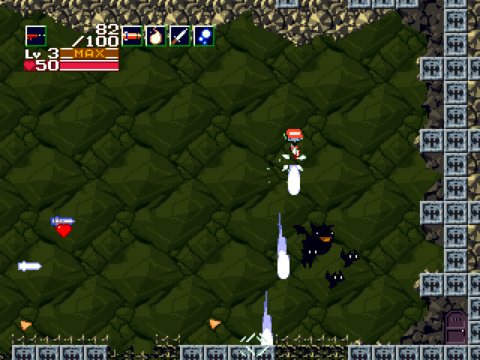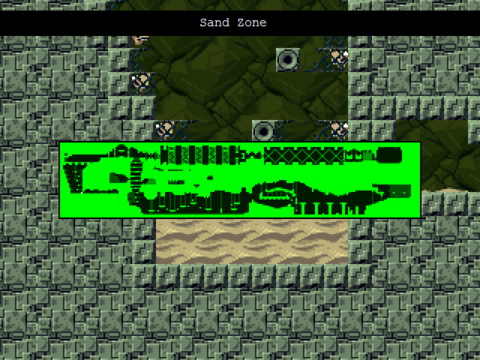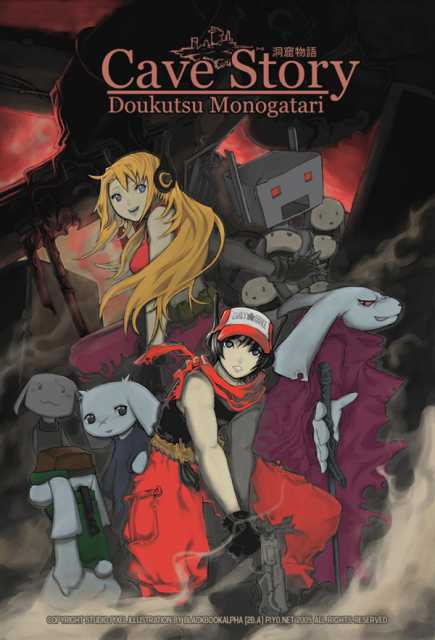Brilliant.
This review stands for the most recent version of the freeware PC release of Cave Story, run as an .exe named “doukutsu” and updated with an English translation. It ignores features in “Cave Story+”, and it does not include the extended ending.
I could easily write in this review that Cave Story is another in the long line of quality exploration-based action platformers a la Castlevania: Symphony of the Night or Super Metroid (ergo, “Metroidvania”,) but that wouldn’t really emphasize what makes Cave Story special in the genre, nor would it accurately represent Cave Story’s actual gameplay. It’s hard to think of many examples where this formula goes wrong; however, it’s equally hard to think of examples that aim as high with their narrative as Cave Story while still forwarding the quality of gameplay achievable in the genre.
Cave Story definitely opens with an emphasis on the classic late 80’s and early 90’s, perhaps to draw these comparisons. References to Mega Man and Castlevania are undeniable at times, but this isn’t simply an example of nostalgia pandering. With a small amount of limited dialogue and no exposition given for your silent protagonist Quote’s presence, Quote effectively wanders around helping the (adorable) Mimiga people protect themselves from the evil Doctor and his minions. The writing remains minimalistic until the player reaches the second or third area, so the gameplay is left to drive the car for a while.

Once the game enters one of its more combat-heavy zones, it becomes apparent why the current version carries Xbox 360 gamepad support natively. Combat is handled through guns and other projectiles, all of which feel as though they add a new dimension to the gameplay. The weapons are generally easy to aim and engaging to use. However, when the game opens, Quote has very limited health, and those without a supreme eye for exploration will not be gaining much more throughout the game. The game also carries a weapon level-up system, which essentially works similarly to power-ups in a classic shooter. By destroying enemies, Quote can collects experience to level up his guns, but taking damage lowers the weapon’s experience and can cause it to lose levels. The higher leveled weapons just look AWESOME as they fire, and the combat is finely tuned to allow for some real precision play. To call the game pixel-perfect (pun intended) is not quite accurate, as Quote’s jump is pretty floaty, but it didn’t take me too long to get used to the way the game handles. Those who dislike the way the game moves should try to stick it out a bit longer, as the game eventually grants multiple traversal power-ups that add a bit more precision to the movement.
One highlight of the game’s combat is the consistently engaging boss encounters. While lackey Balrog gets dragged out once or twice more than he probably should have been, the game’s bosses strike out as easily the most memorable sections of the game. It’s also the part of Cave Story that’s most directly comparable to its predecessors; the bosses largely use classic elements of early Metroid, Mega Man, and Castlevania bosses. When Cave Story aims for Mega Man, it matches it almost step-for-step, though the level-up mechanic adds quite a bit to differentiate the style for fans of the original games. As for the larger, more Metroidvania bosses, the game plays differently enough from the stars of those franchises that it feels fresh without necessarily creating bosses that are all that different from Kraid, Mother Brain, and Succubus.

The map design is largely horizontal, with only a couple of more vertical environments appearing throughout the game. The end of the game places more of an emphasis on precision platforming, but Cave Story is primarily an action-exploration game, and the levels have enough variety to keep themselves interesting. That said, there’s not necessarily that much platforming to do; Cave Story has a relatively small overworld, with only a few areas standing out as “explorable.” There’s also not a whole lot of backtracking so long as the player is not especially interested in collecting health upgrades, weapon capacity upgrades, and other items. However, the game does have multiple endings, and these are largely dictated by certain decisions and hidden items. While player choice is extremely minimal, it is present, and your efficacy as a player can largely affect the path of the story. As a result, the game has quite a bit of replay value for those who don’t 100% the game on its first playthrough.
Once the game’s story does really get going, Cave Story becomes a narrative leader, emotionally attaching the player to characters and creating entertaining dialogue there onward. The characters rarely transcend their archetypes in the “normal” playthrough, but they are continually used in great fashion and remain engaging throughout, resulting in one or two significant emotional climaxes. It’s not difficult to imagine that Cave Story was a highly influential part of the indie game movement; its emphasis on the “retro” and its strong narrative are traits that have held true in the indie scene since, and I believe it holds up extremely well in this regard.

As for presentation, the game’s chibi art style is memorable and lovable, even in this most primitive form. The character portraits express a lot of personality, and the animation allows for a level of graphical prowess far above the 16-bit graphics Cave Story presents itself in. The environments are nicely varied, and the enemy designs are engaging throughout, though there are multiple pallet swaps that can confuse more than engage. The music is undeniably engaging, though, and stands out as a soundtrack that will become a classic in the years to come. And, sadly, indie games are largely known for bugs, but if Cave Story was ever buggy, those problems have been long ironed out.
To directly compare Cave Story to the classics of the Metroidvania genre would be inappropriate, as it’s honestly a rather different game. Its emphasis on constant progress makes it feel drastically different from the sprawling Symphony of the Night, and its storytelling is quite evolved from the hey-day of the style. Instead, Cave Story carves its own path, and it’s an undeniably engaging and fun game that I’ll carry a torch for in years to come.
